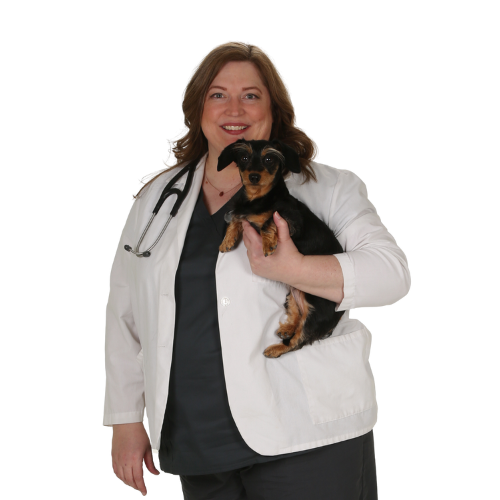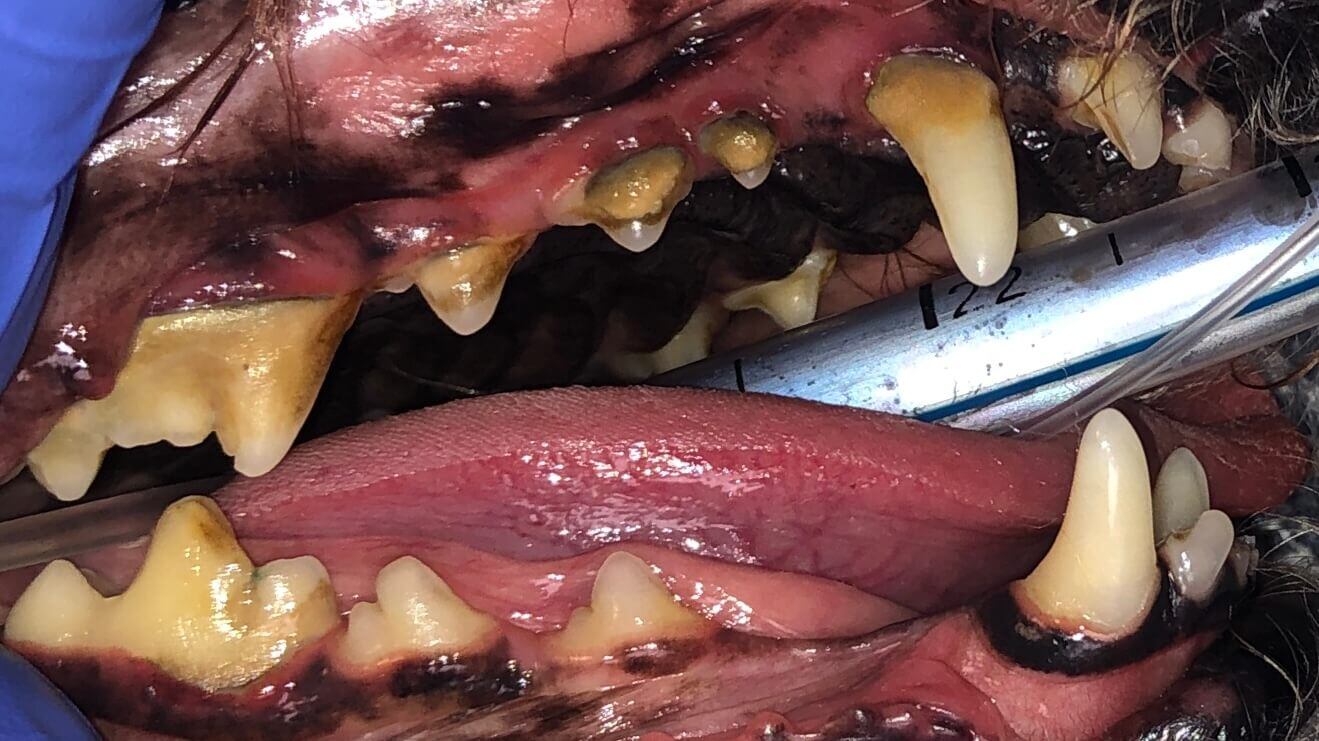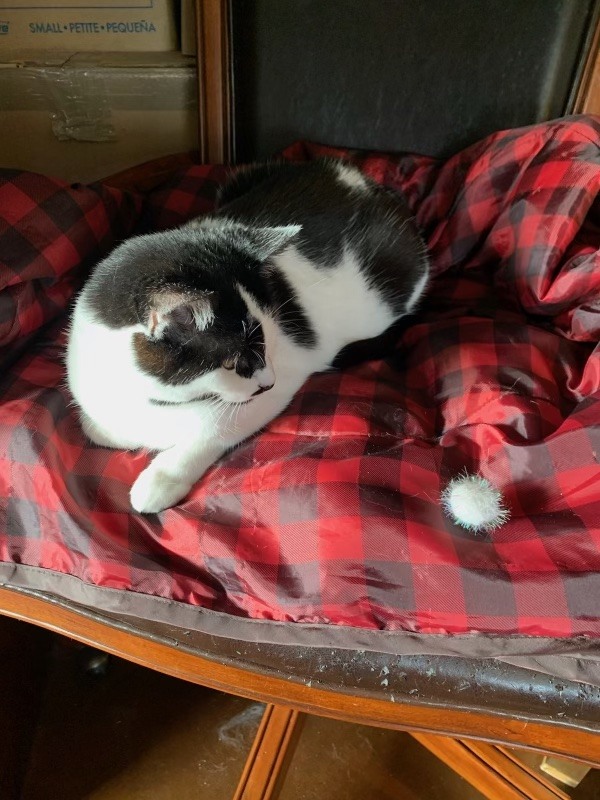1 min read
Complicated Dental Fractures: The Benefits of Root Canal Therapy
Case Summary: In this case study, we delve into the intricate treatment of a complicated crown fracture in a canine tooth, where the pulp is exposed,...
3 min read
 Jennifer Mathis, DVM, DAVDC, CVPP
:
Nov 5, 2024 7:28:23 PM
Jennifer Mathis, DVM, DAVDC, CVPP
:
Nov 5, 2024 7:28:23 PM

Guided Tissue Regeneration (GTR) is a technique used to promote the regeneration of bone and soft tissue, enabling the replacement of infrabony periodontal pockets (sites of vertical bone loss). GTR involves the removal of irritants—such as calculus, bacteria, granulation tissue, and debris—to encourage the regrowth of the periodontal ligament (PDL), bone, and cementum. This is achieved by excluding gingival tissues through a barrier membrane.
The process begins with thorough cleaning of the infrabony pocket using hand curettes and, if needed, specialized ultrasonic curette. A bone graft and barrier membrane are then placed into the pocket, followed by a secure closure of the gingival tissue. The goal of GTR is to restore structural integrity in areas affected by vertical bone loss.
In canine patients, GTR is most commonly performed on the palatal aspects of the maxillary canine teeth and the mesial or distal aspects of the mandibular first molars.
Ziggy, a 10-year-old male neutered Maltese, was presented for a wellness examination with Associate DVM Dr. Elizabeth Schilling at Family Pet Veterinary Center and Animal Dentistry Referral Services. Oral examination findings included notable halitosis and a calculus index of 3/4, indicating a need for comprehensive dental care.
Dr. Schilling recommended a COHAT (Comprehensive Oral Health Assessment and Treatment, also known as a dental prophylaxis) to thoroughly address oral health concerns. Additionally, CBCT (Cone Beam Computed Tomography) was advised to provide detailed, 3D radiographic imaging of all tooth structures across multiple planes. This procedure will be conducted under the supervision of Dr. Jennifer Mathis, DAVDC (Diplomate of the American Veterinary Dental College), ensuring expert assessment and treatment.
Horizontal Bone Loss: Excessive gingiva and pocketing at the distal aspect of tooth 409.
Increased Palatal Probing Depths: Teeth 104 and 204 show increased probing depths with bleeding on probing; infrabony palatal pocket noted at tooth 204 > 104.
Periodontal Disease Staging:
Non-Vital Teeth (T/NV): Teeth 203, 302, and 402.
Possible Condensing Osteitis: Tooth 309—recommend continuing to monitor with a follow-up radiographic evaluation in 6-12 months.
Below: CT Image of Infrabony Pocket 204

Below: 3D Hard Tissue Infrabony Pocket 204

Below: 3D Hard Tissue Overview (left and right)


Pocket Depths Pre-Treatment: Tooth 104 presented with a 5mm palatal pocket; tooth 204 had a 6mm palatal pocket and an 8mm distal pocket.
RP/O Procedure: An envelope flap was created, and curettage was performed to remove granulation tissue and debris. The site was thoroughly cleaned using hand instruments. A ReGum Vet square was placed in the infrabony pocket to serve as a barrier. Closure was achieved with 5-0 Monomend MT suture on a taper needle, ensuring a secure gingival collar.
Extractions: Teeth 102, 203, 302, 402, 105-106, 109-110, 206, and 208 were extracted due to advanced periodontal disease.
Closed Root Planing (RP/C) on Tooth 108: Closed root planing has the potential to result in a 1-2mm reduction in probing depth within 1-3 months, rendering an active periodontal pocket inactive as long as the original probing depth was less than 5mm. Pocket depths greater than 5mm need to be treated by opening a flap. The recurrence of active periodontal disease depends on pocket depth, at-home dental care, and the frequency of professional anesthetic dental cleanings.
Below: Before COHAT (left and right)


Below: Before Guided Tissue Regeneration 204

Below: Before Guided Tissue Regeneration 104

Below: Cleaned Infrabony Pocket During GTR 204

Below: ReGum Vet Application 204

Below: After GTR of 104 and 204

Follow-Up Information:
Ziggy returned to Family Pet Veterinary Centers/Animal Dentistry Referral Services for follow-up care under the direction of Dr. Jennifer Mathis, DAVDC, four months after his initial Guided Tissue Regeneration (GTR) procedure. During his anesthetic dental procedure, CBCT follow-up imaging was performed, and probing revealed promising results: tooth 104 exhibited a pocket of 1-2mm, while tooth 204 measured at 2mm—both well within normal limits!
These sites were cleaned once again during the visit, and we recommended scheduling his next anesthetic dental procedure for cleaning and imaging in 9 months. Ziggy continues to be a fantastic patient, and we are thrilled with his progress!
We look forward to welcoming Ziggy back to Family Pet Veterinary Centers and Animal Dentistry Referral Services for continued care. Thank you for trusting us with his dental health!
%20Case%202%20-%20July%202024/Henry.jpeg)
1 min read
Case Summary: In this case study, we delve into the intricate treatment of a complicated crown fracture in a canine tooth, where the pulp is exposed,...
%20-%20August%202024/3D%20image%20of%20open%20pulp%20chamber.jpg)
1 min read
Case Summary: In this case study, we examine a canine tooth that has been worn down to the pulp, leading to a painful exposure that allows bacteria...

1 min read
Case Summary: Stomatitis is a painful condition characterized by widespread inflammation of the mouth's mucous lining, often linked to immune system...